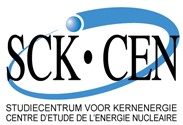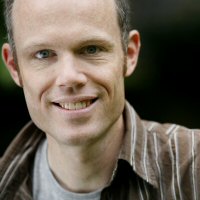Smart Cities
Since its creation eight years ago, the EERA Joint Programme Smart Cities and its participating institutions have contributed significantly to research and innovation in smart cities. The main objective is to develop strong research and innovation for smart planning, design and operation of urban energy systems, firmly integrated with cities’ social, cultural, innovation, economic, regulatory and legal perspectives, to achieve the SET-Plan highly ambitious target of developing 100 Smart Positive Energy Districts in Europe by 2025 (Action 3.2)
The EERA work programme is the following: https://www.eera-set.eu/eera-joint-programmes-jps/list-of-jps/smart-cities/
100 Plus Energy Districts by 2025 – 5 modules:
- Module 1 - Towards European Positive Energy Cities (Lead: VTT & TNO)
- Module 2 - PED Labs (Lead: LNEG)
- Module 3 - PED Guides & Tools (Lead: Fraunhofer ISE)
- Module 4 - PED Replication & Mainstreaming (Lead: CVUT & ENEA)
- Module 5 - Monitoring and Evaluation (Lead: AIT)
Expert pool:
- SP1 - Energy in cities (Coordinator: VTT)
- SP2 - Urban energy networks (Coordinator: ENEA)
- SP3 - Energy-efficient interactive buildings (Coordinator: LNEG)
- SP4 - Urban city -related supply technologies (Coordinator: Campus Iberus)

Contact:
Guy Vekemans
guy.vekemans [at] vito.be
Nuclear materials
Web: www.eera-jpnm.eu
The objective of the EERA JP on Nuclear Materials is to improve safety and sustainability of Nuclear Energy by focusing on materials aspects:
- Better knowledge of materials behaviour under operating conditions, seeking predictive capability, to select the most suited materials and define safe design rules, especially allowing for radiation and temperature effects, while caring for compatibility with coolants.
- Development of innovative materials with superior capabilities, resistant to high temperature and aggressive environments.
Contact:

Dr. Scibetta Marc
Ph.D.
marc.scibetta [at] sckcen.be (subject: BERA%20-%20Nuclear%20materials) (marc[dot]scibetta[at]sckcen[dot]be)
Hydro energy
The Joint Programme Hydropower aims to facilitate a new role for hydropower as enabler for the renewable energy system by aligning and targeting research efforts in Europe. Thematically, the JP Hydropower spans the entire energy chain from water catchment to system integration, and it includes cross-cutting elements such as markets and market design as well as environmental impacts, effects of climate change and policy and societal issues.
The JP Hydropower will emphasize cross-disciplinary cooperation between its Sub-Programmes, synergies with other EERA Joint Programmes and existing European and international projects, and actively engage with the industry in order to secure relevance and impact for the hydropower sector and the renewable energy system.
The JP hydropower works at 5 topics:
- SP1: Mechanical, Hydraulics & Electrical – Coordinated by François Avellan, EPFL (Coordinator) and Associate Pål-Tore Selbo Storli, NTNU (Vice-Coordinator)
- SP2: Hydropower structures – Coordinated by Jochen Aberle, EFZN/TU Braunschweig
- SP3: Grid, System Integration and Markets – Coordinated by Albert Moser, RWTH (Coordinator) and Robert Schürhuber, TU Graz* (Vice-Coordinator)
- SP4: Environmental Impacts and Climate Adaptation – Coordinated by Staffan Lundström, LTU* (Coordinator) and David Finger, RU* (Vice-Coordinator)
- SP5: Policymaking and Social Acceptance – Coordinated by Terese Rutkowski, TU München* (Coordinator) and Patrick Hendrick, BERA (Vice-Coordinator)
- SP6: Digitalization – Coordinated by Thomas Welte, SINTEF
Contact:

Prof. Patrick Hendrick
patrick.hendrick [at] ulb.ac.be (subject: BERA%20-%20Hydro%20energy) (patrick[dot]hendrick[at]ulb[dot]ac[dot]be)
Bio energy
Biomass is currently by far the main renewable source of energy in Europe. In the future, biofuels can still further contribute to the development of sustainable mobility, while solid biomass has the potential to provide even more heat and power with a very high efficiency, and in a dispatchable way.
Although bioenergy has already demonstrated its advantages in terms of energy density, dispatchability and efficiency, it also faces challenges that need to be overcome to reach the next steps of deployment. First of all, the sustainability of the whole value chain must be ensured. With a growing demand, sustainable production techniques, but also efficient conversion processes must be developed. Bioenergy must also be complementary to the emerging bio-based economy: it must be integrated in a cascade-use scheme where the available resources are firstly exploited for their highest added value (materials, chemicals, ...). The bioenergy sector must therefore be ready to cope with a broad scope of resources in a very flexible way.
BERA is an active member of the EERA Joint Program on Bioenergy, where the main research priorities are defined, in line with the objectives of the European Commission. This Joint Program is also a place where multidisciplinary project consortia are created.
At the Belgian level, industrial and academic BERA members organize internal meetings and public events dedicated to bioenergy and aiming at fostering national collaborations in this field.
Contact:

Julien.blondeau [at] vub.be (subject: BERA%20-%20Bio%20energy) (julien[dot]blondeau[at]vub[dot]be)
Smart grids
The Joint Programme on Smart Grids was officially launched at the SET Plan Conference in Madrid (3-4 June 2010). The JP, coordinated by RSE and ENEA from Italy by means of an extended cross-disciplinary cooperation involving many Research and Development (R&D) participants with different and complementary expertise and facilities, aims at addressing in a medium- to long-term research perspective, one of the most critical areas directly relating to the effective acceleration of smart grid development and deployment.
VITO is the leader of the control system interoperability subprogramme:
- SP1 - Network Operation (coordinator: AIT)
- SP2 - Energy Management (coordinator: DTU)
- SP3 - Control System Interoperability (coordinator: VITO)
- SP4 - Electrical Storage Technologies (coordinator: VTT)
- SP5 - Transmission Networks (coordinator: SINTEF)
Contact:

Chris Caerts
Chris.caerts [at] vito.be (subject: BERA%20-%20Smart%20grids) (chris[dot]caerts[at]vito[dot]be)
Geothermal
Geothermal energy is a non-carbon-based renewable energy source, able to provide peak and base load power for electricity and heat generation in many countries around the world. In Europe, the geothermal potential is estimated to be between 80-100 GWe, however, only in Italy, Iceland, and Portugal it is harnessed for the generation of electricity (over 1.6 GW). In several European countries like Island, France or Germany, the geothermal power is used on a small or district scale, mainly for heating supply and heat/chill storage. In addition, the geothermal energy is used for industrial heating, mainly for agricultural purposes (greenhouses) and heating homes, offices. The development scenarios foresee about 5-6 GW of installed geothermal electric capacity within 2020 and between 15 and 30 GW within 2030.
The EERA Joint Programme on Geothermal Energy (JPGE) provides added value through strategic leadership and by speeding up the realization of the SET-plan goals. Our major group of strong research players performing a long-term collaboration enhances networking activities and trust between all the participating partners resulting in a major virtual excellence centre. It is estimated that more than 40% of the European public research capacity is integrated into the EERA JPGE.
JPGE supports the Implementation Plan (IP) for Deep Geothermal by the SET-Plan Temporary Working Group , and will focus research efforts for the support of its realization. IP Deep Geothermal have identified eight research and innovation (R&I) activities:
Topics of the Geothermal Implementation Plan
- Geothermal heat in urban areas
- Materials, methods and equipment to improve operational availability (high temperatures, corrosion, scaling)
- Enhancement of conventional reservoirs and deployment of unconventional reservoirs
- Improvement of performance (conversion to electricity and direct use of heat)
- Exploration techniques (including resource prediction and exploratory drilling)
- Advanced drilling/well completion techniques
- Integration of geothermal heat and power in the energy system and grid flexibility
- Zero emissions power plants
Contact:

Virginie Harcouet-Menou
virginie.harcouet-menou [at] vito.be
Wind energy
The Belgian task group on wind energy, chaired by the VUB, brings Belgian research partners together on this topic. For each sub-group two members have been chosen as coordinator (bold) and vice-coordinator. They represent BERA Wind scientific activities at european level on the following topics:
- Aerodynamics: UCL & UMons
- Structures & Materials: ULg & Ugent
- Offshore: VUB & Ugent
- Wind condition: KUL & VKI
- Grid: Laborelec & ULB
- Research facilities: Sirris & VKI
In addition to the European oriented activities, a yearly BERA PhD event is organized involving around 100 researchers in Europe.
Contact:

Christof De Vriendt
Christof.devriendt [at] avrg.be
Energy Systems Integration
This Joint Programme in Energy Systems Integration seeks to bring together research strengths across Europe to optimize our energy system, in particular by benefiting from the synergies between heating, cooling, electricity, renewable energy and fuel pathways at all scales. The energy elements of the water and transport system are also included as is the enabling data and control network that enables the optimization.
The Joint Programme in Energy Systems Integration is designed to develop the technical and economic framework that government and industries will need to build the future efficient and sustainable European energy system. It is fully aligned with the recently published SET Plan Integrated Roadmap and potential impact include increased reliability and performance, minimisation of cost and environmental impacts and, in particular, increased penetration of renewable energy sources.
STRUCTURE
The Joint Programme is organised in 5 Sub-Programmes (SP) that target different aspects of Energy Systems Integration. Given the nature of Energy Systems Integration, the SPs are strongly interlinked.
KULeuven is vice-coordinator of the Energy Systems integration joint programme and task leader of the finance & regulation subprogramme.
- SP1 - Modelling, coordinated by Dr. Juha Kiviluoma, VTT (FI)
- SP2 - Forecasting, aggregation & control, coordinated by Prof. Henrik Madsen, DTU (DK)
- SP3 - Technology, coordinated by Peter Breuhaus, IRIS (NO)
- SP4 - Consumer, coordinated by Kristiane Lindland, IRIS (NO)
- SP5 - Finance & regulation, coordinated by Erik Delarue, KU Leuven (BE)
Contact:

Prof. William Dhaeseleer
william.dhaeseleer [at] kuleuven.be
E3S
Why a Joint Programme on the Economic, Environmental and Social Impacts of Energy Policies and Technologies (“e3s”)?
Europe has adopted more ambitious energy policy objectives to achieve a low carbon scenario by 2050. The changes in energy policy reflect a re-orientation away from specific technological solutions and markets towards system transformation. This reorientation recognises that technological solutions alone are likely to be insufficient to address the ‘grand challenges’ in energy and that enhanced policy advice is necessary to understand the complex interaction of a variety of socio-technical elements, such as consumer behaviour and acceptance, markets and technologies.
Sub-programmes:
- SP1: Public perception and engagement (lead NTNU)
- SP2: Market design for energy transition (lead SINTEF)
- SP3: Life Cycle Approach for evaluating the sustainability performance of energy technologies (lead CIEMAT)
- SP4: Energy models for a system assessment of European low-carbon energy futures: markets, environmental and economic impacts (lead ENEA)
- SP5: Sustainable low-carbon platform (lead VTT)
Contact:

Pieter Valkering
pieter.valkering [at] energyville.be (subject: BERA%20-%20E3S) (pieter[dot]valkering[at]energyville[dot]be)
H2 and Fuel Cell
The BERA TG H2&FC regroups the largest part of all academic institutions and research institutions active in H2 and Fuel Cell research in Belgium.
Currently it includes as members:
- IMEC
- KULeuven
- Laborelec
- UCLouvain
- ULB
- UGent
- University of Antwerp
- University of Hasselt
- University of Liège
- University of Mons
- VITO
- von Karman Institute
- VUB
The BERA TG H2 is a full member of HER (Hydrogen Europe Research) and of the EERA Joint Program Fuel Cell and Hydrogen (JP FCH).
Contact:
The chairpersons are currently Prof. Patrick Hendrick (ULB) and Prof. Nathalie Job (ULiège).

Prof. Patrick Hendrick
patrick.hendrick [at] ulb.ac.be (subject: BERA%20-%20BERA%20TG%20H2) (patrick[dot]hendrick[at]ulb[dot]ac[dot]be)

Prof. Nathalie Job
nathalie.job [at] uliege.be
